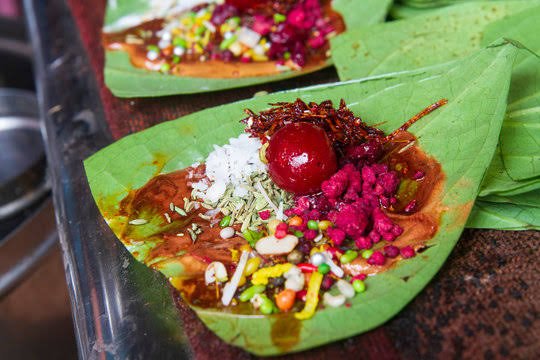
Paan, a popular chewable preparation in South Asia, is known for its addictive qualities due to a combination of factors, including its unique ingredients and cultural significance. The main ingredients of paan typically include betel leaves, areca nuts, slaked lime (calcium hydroxide), and various flavorings and sweeteners, but regional variations can introduce additional elements.

The addictive nature of paan can be attributed to several key aspects:
1. Stimulant Properties
Areca nuts, one of the primary components, contain psychoactive alkaloids, such as arecoline, which acts as a stimulant. The mild euphoria and increased alertness induced by these compounds can contribute to addiction.
2. Flavour and Aroma
Paan is crafted with a myriad of flavorful ingredients, including cardamom, fennel seeds, cloves, and sweet syrups, providing a burst of tastes and aromas. This sensory experience can be captivating, making individuals crave the unique combination of flavors.

3. Cultural Significance
Paan holds deep cultural and social importance in South Asian communities. It is often shared and offered as a sign of hospitality, bonding, or celebration. The act of sharing paan reinforces social connections, adding an emotional component to its consumption.
4. Mouthfeel and Texture
The act of chewing paan, along with the gritty texture of slaked lime and areca nut, can be pleasing to many. The process of rolling the ingredients in a betel leaf and savoring the mixture can become habit-forming.

5. Mild Relaxation
Despite its stimulating properties, paan is believed to induce a sense of relaxation in some individuals. This paradoxical effect can contribute to its habitual use.
The specific recipe and ingredients can vary widely across regions and personal preferences, further enhancing its allure. However, it’s important to note that while paan is enjoyed by many, it can also have adverse health effects, including the risk of oral cancer due to long-term use of areca nut. Therefore, its addictive nature should be considered in the context of potential health risks.



